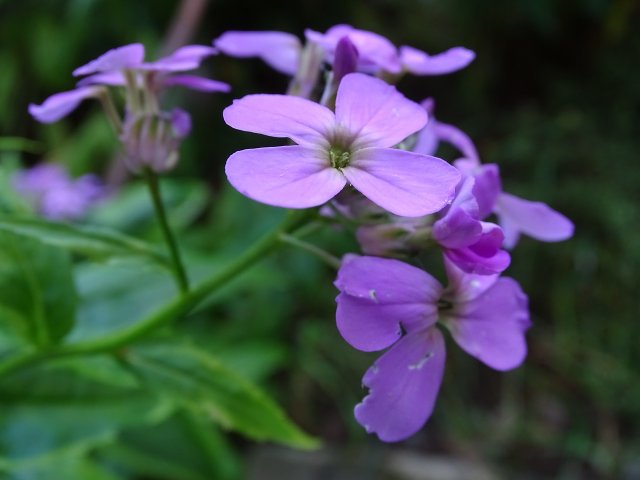
Night violet is very popular as an ornamental plant in gardens because of its delicate flowers and pleasant smell. We’ll show you what you should keep in mind.
The night violet belongs to the cruciferous family and is native to many areas in Europe and Central Asia. There it is found mainly in higher areas, near streams and rivers. In Europe, night violets are a popular visual addition to flower beds. They bloom from May to July. During this time, they emit an intense odor, especially in the evening.
This also attracts bees, bumblebees and other insects, making the night violet an ideal plant for insect-friendly gardens. The small flowers are also edible for humans in moderation. They are suitable as toppings for desserts, cakes and other sweet dishes.
Night violet: characteristics and sowing

If you want to plant night violets in your own garden, you should consider the following things beforehand:
- It’s best to choose a sunny to partial shade location. Also make sure that there is enough space: Night violets grow about 60 to 70 centimeters tall and get 30 to 50 centimeters wide.
- The soil should be rich in nutrients and humus, as well as loose and permeable. A stony-sandy soil is ideal: For this, you can enrich the soil with some sand or gravel.
- If you use purchased young plants, you should plant them right away in spring. Then they usually bloom in the same year.
- You can also buy seeds for night violets. Sow the seeds either in spring or in late summer.
- Make sure there is enough spacing (about 40 to 50 inches) between plants.
Other plant species that make good neighbors for night violets include umbellate bellflower, white willowherb, and mountain bellflower. They also act as an important food source for bees, bumblebees and other insects. For more tips on how to have an insect-friendly garden, check out these articles: Insect-Friendly Garden: How to Support Biodiversity and Planting Your Front Garden: Making it bee-friendly with these plants
Tips for care and propagation of night violets
Night violets are very easy to care for and usually reproduce on their own without any problems. The following tips should be followed:
- Water night violets at regular intervals so that the soil never dries out completely. However, make sure that the soil is not too saturated. If the perennial is submerged too often, it will die over time.
- You do not need to fertilize night violets.
- Since night violets are native plants, they usually survive the European winter. Therefore, you do not need to take any further measures for overwintering.
- However, some plants die after the first flowering. If you want to prolong the life of the plant, you can cut it back after the end of the flowering period. However, this will also prevent the plant from self-seeding, as no seeds can form.
- If you do not cut back night violets, they will usually reproduce on their own without any problems. If you want to help a little, you can cut off some stems either in spring or in late summer, take cuttings and propagate night violets that way.

